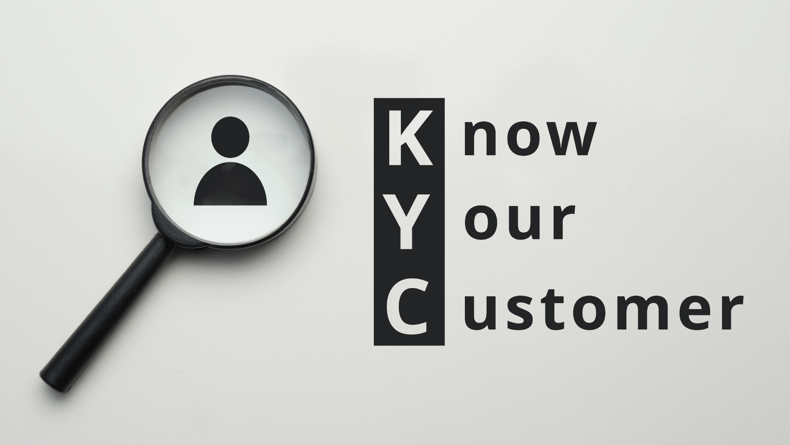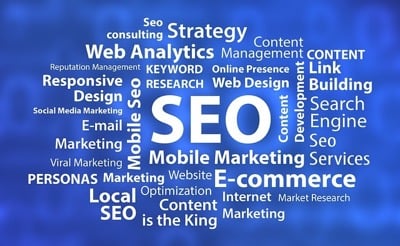Have you ever heard of SMART (Specific, Measurable, Achievable, Relevant, and Timely) goals? What about PEST (Political, Economic, Social, Technological) analysis? If acronyms like these make your head spin, you’re not alone. Marketing acronyms can be confusing, but they’re necessary in the business world. Here is a quick guide to some of the newest and most common digital marketing acronyms to help you better understand what they mean and how to use them.
 Most Important Marketing Acronyms A to Z
Most Important Marketing Acronyms A to Z
Acronyms aren't always easy. But if you want to get an edge when using marketing jargon, here's a quick glossary for some of the most popular terms used by marketers today:
-
AI: Artificial Intelligence: Artificial intelligence uses computer algorithms to simulate or replicate human intelligence. In marketing, AI can be used for customer segmentation, content generation, and lead scoring tasks.
- AIDA: Attention, Interest, Desire, Action: The AIDA model is a writing format used to convert readers into customers. It is meant to first grab the attention of the reader, create a point of interest to draw them in, use a benefit to create desire, and finish it with a call to action.
- B2B: Business-to-Business: B2B refers to businesses that sell products or services to other businesses. These transactions usually involve larger amounts of money and longer sales cycles than B2C transactions.
- BANT: Budget, Authority, Need, Timeline: BANT refers to criteria used to qualify leads. This is mainly used to determine whether a lead is ready to be sold or if they need more nurturing.
- CAC: Customer Acquisition Cost: This measures how much it costs to acquire a new customer. It is done by dividing the total marketing and sales costs by the number of new customers acquired.
- CAN-SPAM: Controlling the Assault of Non-Solicited Pornography and Marketing : CAN-SPAM is a law that regulates email marketing, specifically unsolicited commercial emails. It requires marketers to include a way for recipients to opt out of future communications and imposes fines for violations.
- CMO: Chief Marketing Officer: The CMO is the executive responsible for overseeing all marketing activities and strategies. They are usually members of the senior management team and report to the CEO.
- CPA: Cost Per Action/Acquisition: CPA measures how much it costs to get someone to take the desired action. It can also be used to track the effectiveness of marketing campaigns.
- CPC: Cost Per Click: CPC is an online advertising metric that measures how much it costs to get someone to click on an ad. It’s often used in paid search campaigns, where advertisers bid on keywords in order to have their ads appear in search results.
- CR: Conversion Rate: Conversion rate is the percentage of visitors to your site who take the desired action. This could range from making a purchase to signing up for a newsletter.
 CTA: Call to Action: A CTA is a command that encourages users to take the desired action. This could be something as simple as “Click here to learn more” or “Buy now.”
CTA: Call to Action: A CTA is a command that encourages users to take the desired action. This could be something as simple as “Click here to learn more” or “Buy now.” - CTR: Click-Through Rate: CTR is a method of measuring how effective an ad or email campaign is. A high CTR means that people are engaging with your content and finding it relevant.
- CX: Customer Experience: CX is the way customers interact with and feel about your brand. Creating a positive CX is essential to keeping customers happy and loyal to your brand.
- DCX: Digital Customer Experience: DCX is how customers interact with your brand online through your website, social media, and other digital channels. It must be smooth, efficient, and user-friendly in order to keep customers coming back.
- ESP: Emotional Selling Proposition: An ESP is a unique selling point that resonates with customers on an emotional level. It’s an effective way to connect with customers and create a deeper level of loyalty.
- GDP: Gross Domestic Product: This is a measure of a country’s economic output, which can be used as an indicator of market size or potential. It’s often used by multinational companies to assess whether a particular country is worth doing business in.
- GRP: Gross Rating Point: GRP is a measure of reach and frequency. It’s often used in television advertising, where it’s calculated by multiplying the number of people who see an advertisement by the number of times they see it.
- KPI: Key Performance Indicator: A KPI is a metric used to measure progress and success. KPIs can be financial, such as revenue or profit, or non-financial, such as customer satisfaction or social media followers.
- PPC: Pay-per-Click: It’s an online advertising model where you only pay when someone clicks on your ad. PPC is a marketing strategy that can be used to drive traffic to your website or generate leads.
- PV: Page Views: PV is a metric that measures how many times a page on your website has been viewed. It’s a good way to gauge the popularity of your content and see how well it’s performing.
- ROI: Return on Investment: ROI measures how much profit or revenue you make in relation to the amount of money you invest. It’s a key metric for assessing the success of any marketing trends.
- ROMI: Return on Marketing Investment: ROMI is used to evaluate the effectiveness of marketing campaigns by calculating the return on investment. It takes into account both financial and non-financial measures to give a complete picture of performance.
- SaaS: Software as a Service: SaaS lets users access and use the software from a remote location. It’s a popular model for businesses, as it allows them to save on costs associated with installation and maintenance.
 SEO: Search Engine Optimization: SEO means optimizing your website to rank higher on search engine results pages (SERPs). A higher ranking means more visibility for your brand, which can lead to more traffic and conversions.
SEO: Search Engine Optimization: SEO means optimizing your website to rank higher on search engine results pages (SERPs). A higher ranking means more visibility for your brand, which can lead to more traffic and conversions.- UI: User Interface: The user interface is the part of your website or app that users interact with. It includes elements like buttons, menus, and icons designed to make the user experience as smooth and efficient as possible.
- UX: User Experience: This term refers to the overall experience that a user has when interacting with your brand, including everything from your website design to the way customer service is handled.
Conclusion
We hope this alphabet of acronyms has been helpful in deciphering some of the more commonly used marketing terms. If you need help getting started, our Connection Model digital marketing consulting services can develop a comprehensive online marketing strategy to boost your online presence and ROI. Contact us today to get started.
Written By: David Carpenter


